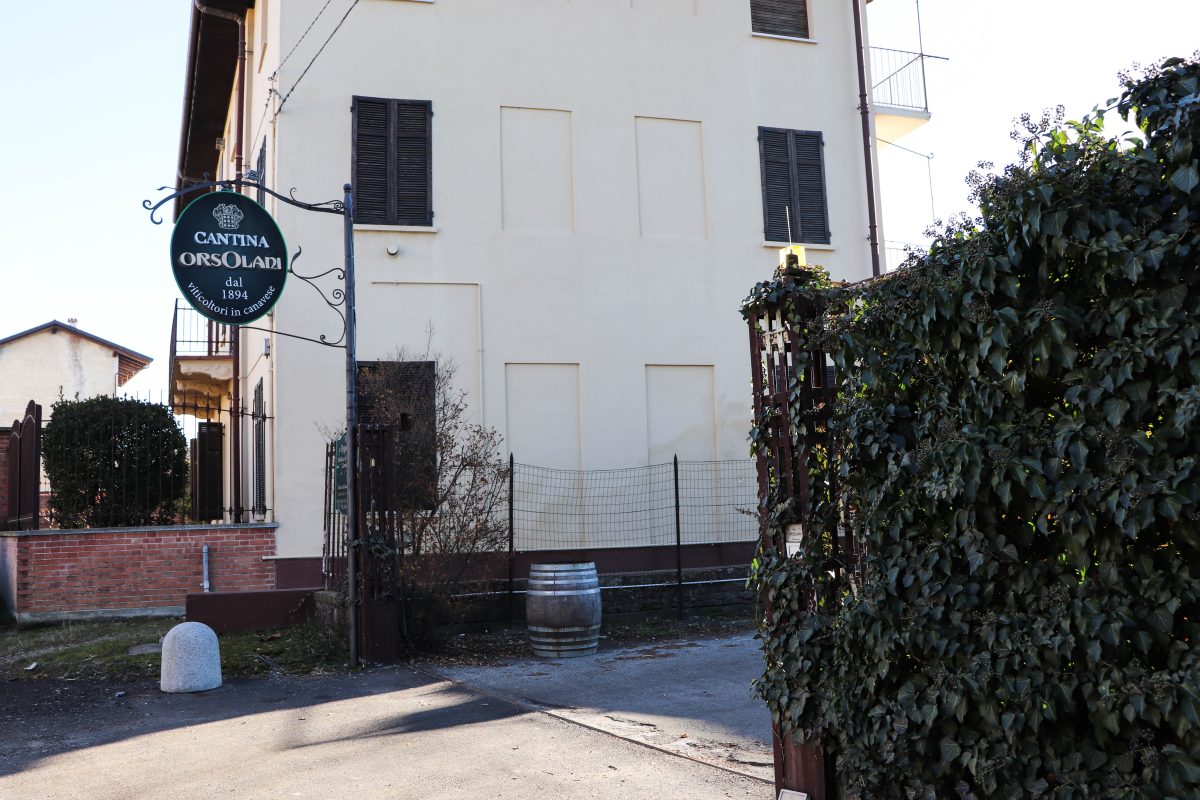In the end of last year, italian wines and Italy were calling me. Wine has been a great passion for me, which is why I can work for hours and never get tired. My curiosity was great, not only for the less known wines from Piemont (the wine region that I love the most), but also for the opportunity to keep alive the Italian culture and language in my family and to make a contribution to the Italian wines somehow.
I had already scheduled a conversation with Gian Luigi Orsolani, even without speaking a word of Italian. It would have been a disaster… But, luckily for me, he spoke English. We were going to work together and that was something very exciting for me. Besides Gian Luigi, I also had the honor of meeting his father, Francesco, a man whose passion for wine allowed him to work all these years.
The Orsolani winery is a reference in wines made with the grape erbaluce since 1894, an autochthonous white grape of Greek origin. It’s a very prized winery in Italy.
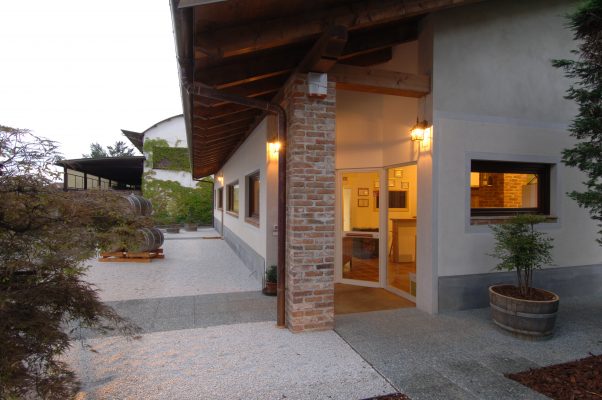
The most surprising and revealing fact for me was to realize the great potential that this Erbaluce di Caluso region possesses, especially considering the Erbaluce grape. In addition to the versatility of the grape, in which it is possible to make wines in various styles, including a method of drying the grapes that naturally can develop the noble rot, there are some strong indicators of quality in the wines of the winemaker Orsolani. Some of them are high acidity, intensity of fruit, great complexity, persistence, intensity, integrated tertiary aromas, very balanced with an extraordinary potential of aging and even the presence of few tannins, which made me made me realize I was in the right place. It takes a little time to understand the wines personality, but that’s also what makes wines interesting.
This is the dry white wine La Rustia from Orsolani Winery. The name was given because of the grapes that are toasted in the sun. We made a comparison between La Rustia of 2005 and the 2017. La Rustia 2005 is still fresh and developing notes of dried fruit and honey, which is impressive. One food and wine pairing suggestion could be greasy fish like salmon.
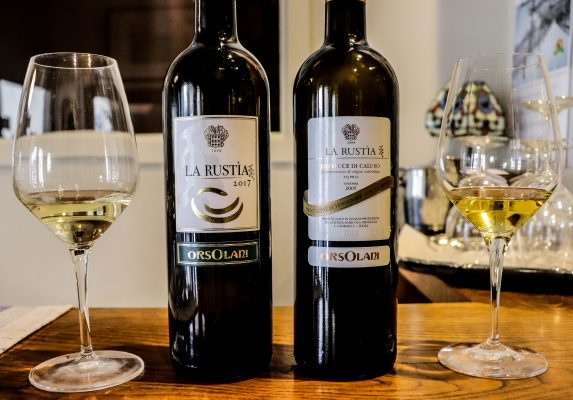
In addition to the entire aromatic profile of the La Rustia 2017 (white flowers, chamomile and sage, lemon, tangerine, citrus peel, pear, apple, stony, butter and almonds), with time the sage and the flowers start integrating with dried fruit notes like apricot and also butter and almond notes are highlighted.
The vineyards are grown in pergola. “It is like building a house” – Gian Luigi said. They are located in a soil derived from the ice age, acid, sandy and rocky, which gives high minerality to the wines. In addition, there is little intervention in the vineyards and the use of oenological products is limited. They also seek to reduce the environmental impact of their activity to the fullest, having won ecofriendly awards, the latest in 2018 by the Vinibuoni Guide.
The second wine from left to right is Passito, which can age for a century. The thick skin of the grape allows the wine to be made with grapes that have been dried naturally, concentrating aromas and flavors. Given the high acidity of the grape, these sweet wines are extremely complex and balanced, ideal to pair with blue cheeses.
From left to right, is Rosso Canavese, Passito, La Rustia 2005 and La Rustia 2017.
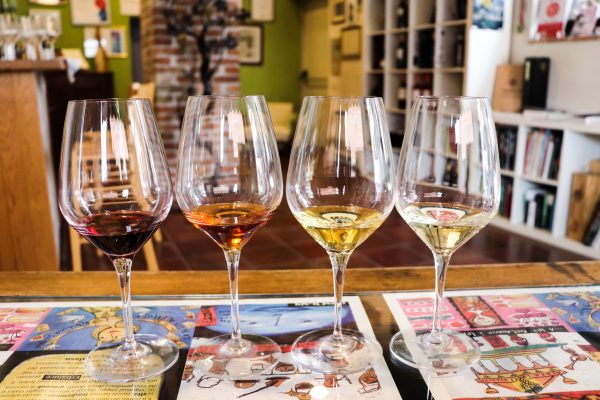
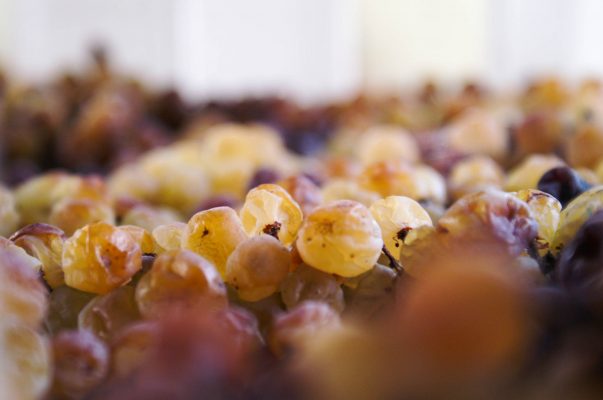
Orsolani Winery pioneered the creation of the sparkling made entirely by erbaluce grape by the traditional method. He produces them since 1968. This method allows the yeasts to stay longer in contact with the wine, so it develops aromas and flavors of bread and brioche and adds a better texture to the wine. A difference between these two is complexity.
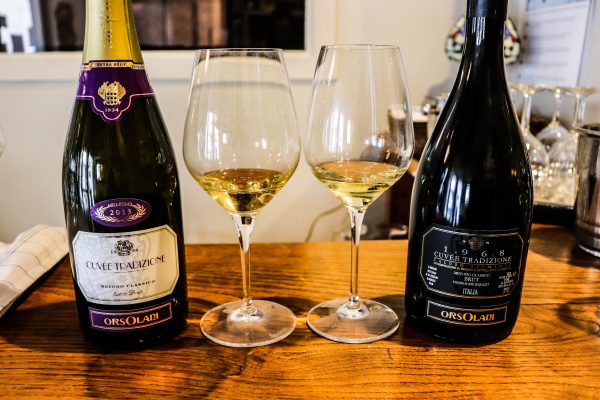
The sparkling wine of the left is aged for at least 36 months, the other one is 60 months. They are refreshing, saline, sunny and aromatic which transported me, for a brief moment, to the beaches of Brazil.
Learn more at http://www.orsolani.com




